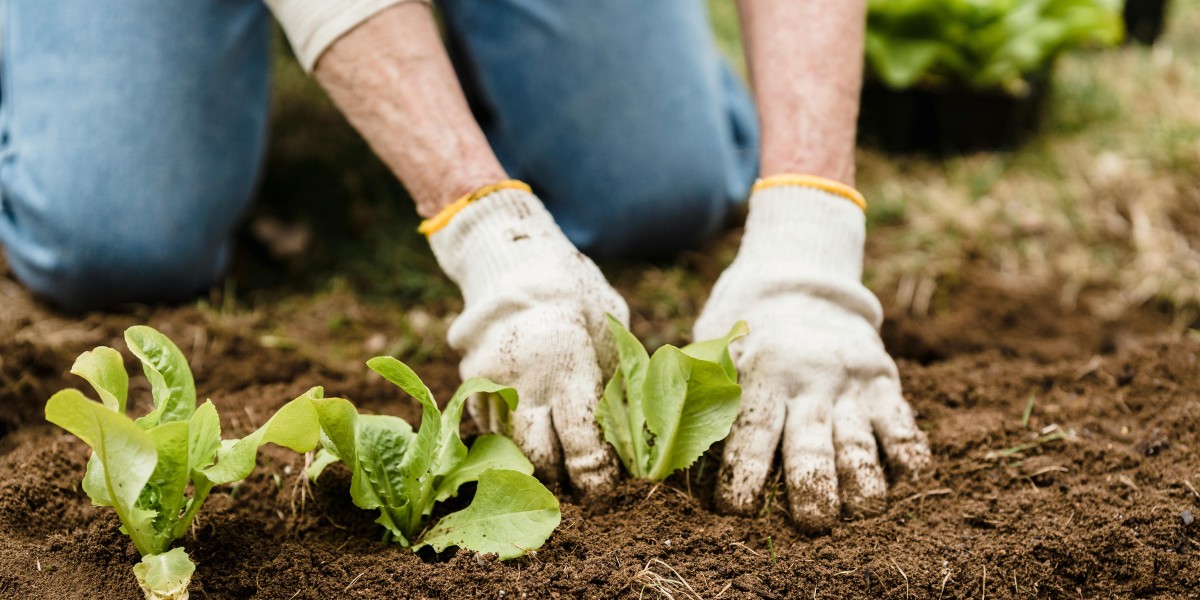In this blog, we’ll cover the best crops to plant when the soil starts to warm, tips for successful germination, and why choosing the right seeds for spring is critical for maximizing your garden or farm’s productivity.
The Importance of Timing Your Spring Planting
Spring is a time of renewal and growth, and the season's milder temperatures and longer days create ideal conditions for many plants to thrive. However, planting too early can expose seeds to frost, while waiting too long can shorten the growing season. Understanding your local climate and frost dates is essential to perfecting your planting.
What’s the Right Time to Plant?
The right time to plant depends on your region’s last frost date and soil temperatures. Most spring crops can be planted once the soil has warmed to at least 40°F. However, more tender plants like tomatoes and peppers should be planted after the threat of frost has ultimately passed, typically when soil temperatures are above 60°F.
Farmers who Order fresh seeds early and plan their crops around their local growing season can get a head start, ensuring their plants have enough time to mature before the heat of summer sets in.
Tips for Spring Planting Success
- Start Indoors: Some seeds benefit from being started indoors and transplanted later, giving them a head start on the growing season.
- Use Row Covers: Protecting young plants with row covers or cold frames from late frosts can extend the growing season and help tender seedlings survive.
What to Plant in Early Spring: Cold-Hardy Crops
In the early weeks of spring, while the weather is still cool, cold-hardy crops are the best choice. These plants can handle cooler soil temperatures and are often frost-tolerant, making them ideal for early planting.
1. Leafy Greens: Spinach, Lettuce, and Kale
Leafy greens like spinach, lettuce, and kale are some of the first crops planted in early spring. These cool-weather vegetables thrive in temperatures between 50°F and 70°F and can tolerate light frosts, allowing them to flourish in the cool days of early spring.
- Spinach: Spinach is a fast-growing green that can be sown as soon as the soil is workable. It matures quickly, making it a perfect early spring crop.
- Lettuce: With wide varieties, lettuce can be grown as a cut-and-come-again crop, allowing multiple harvests throughout the season.
- Kale: Known for its hardiness, kale is a superfood that can withstand frosts, making it a reliable choice for spring planting.
2. Peas: Snap, Snow, and Shelling Peas
Peas are another cold-hardy crop that can be planted as soon as the soil thaws. These legumes prefer cooler temperatures and will stop producing once the weather heats up, so it's best to plant them early in spring for the best yield.
- Snap Peas: Known for their sweet, edible pods, snap peas are a delicious addition to any spring garden.
- Snow Peas: Ideal for stir-fries and salads, snow peas are another quick-maturing option that thrives in excellent conditions.
- Shelling Peas: These peas are grown for the seeds inside the pods and are great for freezing, ensuring you can enjoy your spring harvest long after the season ends.
3. Radishes: A Quick Spring Favorite
Radishes are a top choice if you're looking for a fast-growing crop. Radishes can be ready to harvest in as little as 25 days, making them a perfect early spring crop that offers a quick reward. Radishes thrive in cooler weather and should be planted early for the best results.
Mid-Spring Planting: Warmer Weather Crops
As the weather warms and the risk of frost diminishes, it's time to transition to crops that need slightly higher temperatures to grow. These mid-spring crops still thrive before the heat of summer arrives but require warmer soil to germinate properly.
1. Carrots and Beets: Root Vegetables for the Spring
Carrots and beets are perfect for mid-spring planting. They prefer mild spring temperatures but need warmer soil for proper germination. These root vegetables thrive in well-prepared soil and can be harvested throughout the season.
- Carrots: Sow carrot seeds directly into the soil once temperatures have risen above 50°F. Carrots take longer to mature, so planting them mid-spring ensures a summer harvest.
- Beets: Beets are another excellent spring crop. They can be grown for both their roots and greens. They prefer temperatures between 50°F and 70°F.
2. Onions and Leeks
Onions and leeks are cool-season crops that can be started in early to mid-spring, depending on the variety. These plants thrive in cooler temperatures and should be planted early enough to mature before the summer heat.
- Onions can be planted as sets (small bulbs) or directly from seed. They're versatile and can be harvested at various stages.
- Leeks Known for their mild flavor, leeks are a slow-growing crop that should be started early in the spring for a late summer harvest.
3. Broccoli and Cauliflower: Brassicas for the Spring
Brassicas, including broccoli and cauliflower, are cool-weather crops that prefer the mild temperatures of spring. For optimal growth, they require well-drained soil and consistent watering.
- Broccoli: Plant broccoli in mid-spring to allow it to mature before the summer heat. Broccoli can tolerate light frosts, making it ideal for spring gardens.
- Cauliflower: Similar to broccoli, cauliflower thrives in cool weather and should be planted early enough to mature before the arrival of hot summer temperatures.
Planning for Warm-Season Crops
While spring is a great time to plant cool-weather crops, it’s also essential to start preparing for summer. Some warm-season crops, like tomatoes, peppers, and eggplants, require a longer growing season and should be started indoors in early spring to be ready for transplanting once the danger of frost has passed.
1. Starting Warm-Season Crops Indoors
- Tomatoes: Start tomato seeds indoors about 6-8 weeks before your last frost date. They need warm soil and consistent heat to germinate but will reward you with a bountiful harvest in the summer.
- Peppers: Like tomatoes, peppers should be started indoors early in the spring. These heat-loving plants require a long growing season, so getting them started indoors ensures they have enough time to produce fruit.
- Buy seeds for these warm-season crops early to ensure you have the best varieties available when it’s time to plant.
Prepare for a Bountiful Spring Harvest
Spring is a time of excitement and renewal in the garden, and with the right planning and seed selection, you can set yourself up for a successful and productive season. From leafy greens to root vegetables and preparing for warm-season crops, there are endless possibilities for a spring garden that thrives.
"Gardening is a way of showing that you believe in tomorrow."
By choosing the right crops for the season and ensuring that your soil, climate, and timing align, you'll be ready to enjoy the rewards of spring planting. Whether growing for personal enjoyment or commercial production, spring offers an opportunity to refresh your fields and embrace the beauty of nature's growth cycle. Rather than a traditional conclusion, think of spring as the beginning of a new journey in your gardening year—one filled with anticipation, learning, and the promise of a rich harvest.



